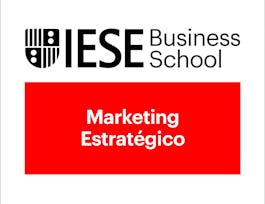When does an opportunity to increase the bottom line become a liability for long-term brand sustainability and profitability? That is the question that GAS GAS, an off-road motorcycle manufacturer, is confronting.


Analysis of Business Problems
This course is part of Foundations of Management Specialization
Taught in English
Some content may not be translated

Instructor: Carlos García Pont
14,690 already enrolled
Included with 
Course
(137 reviews)
Details to know

Add to your LinkedIn profile
Course
(137 reviews)
See how employees at top companies are mastering in-demand skills

Build your subject-matter expertise
- Learn new concepts from industry experts
- Gain a foundational understanding of a subject or tool
- Develop job-relevant skills with hands-on projects
- Earn a shareable career certificate


Earn a career certificate
Add this credential to your LinkedIn profile, resume, or CV
Share it on social media and in your performance review

There are 5 modules in this course
Welcome! Before you start today's videos, please have a look at the syllabus. In this first session, I’ll introduce you to IESE’s six-step Analysis of Business Problems (ABP) methodology. This methodology is a very useful tool to help managers in their principal responsibility: making decisions. Because most business problems involve financial, technical and human issues, they are by nature complex. No matter how much thought you put into it, there is no “correct solution” and certainly no guarantee that your decision will yield the desired outcomes. Learning this six-step methodology is therefore a great help to many mangers as they take on their decision-making challenges, such as the one that GAS GAS faces. Objectives: To give learners a relevant and effective tool to make managerial decisions.
What's included
12 videos4 readings1 peer review1 discussion prompt
Now that you understand a bit of the history of GAS GAS, it’s time to analyze the situation from a marketing perspective. The decision to manufacture bikes for KTM will undoubtedly have an impact on consumers, branding, pricing and channels. Will that impact be positive or negative? Are the risks worth the long-term benefit? What should the CEO take into consideration when making a decision? By the end of the session you should have enough information to advise Ramon Puente about the relevant marketing issues. Objective: To apply the marketing concepts acquired in Marketing: Understanding Your Customers in order to evaluate and make a decision about GAS GAS.
What's included
4 videos1 reading1 peer review1 discussion prompt
In this session, we will evaluate GAS GAS’ history and current situation and discuss the potential financial effect of partnering with KTM. After looking at some of the concepts we discussed in Module 3 - need of funds for operations (NFO), working capital (WC), sustainable growth and more – the learner will be able to understand how the financial outlook will influence the ultimate decision. Objective: To apply the financial concepts acquired in Operational Finance: Building a Robust Business in order evaluate the GAS GAS problem from a financial perspective.
What's included
5 videos1 reading1 peer review1 discussion prompt
All business decisions have a direct impact on people. So that the board makes the best decision possible, it is important to examine whether they have the most effective tools at their disposal from an Organization Behavior perspective. Who are the people on the board and how well do they work together as a team? Whatever they decide will affect GAS GAS employees. This is a critical consideration for leadership to take into account as they weigh the financial and marketing issues you have already discussed. Objective: To apply the organizational behavior concepts acquired in Organizational Behavior: Managing People in order to evaluate and help Ramon Puente make a decision about GAS GAS.
What's included
5 videos1 reading1 peer review1 discussion prompt
What's included
1 video1 peer review
Instructor

Offered by
Recommended if you're interested in Marketing

Arizona State University

IESE Business School

Alfaisal University | KLD
Why people choose Coursera for their career




Learner reviews
Showing 3 of 137
137 reviews
- 5 stars
77.37%
- 4 stars
16.78%
- 3 stars
3.64%
- 2 stars
1.45%
- 1 star
0.72%
New to Marketing? Start here.

Open new doors with Coursera Plus
Unlimited access to 7,000+ world-class courses, hands-on projects, and job-ready certificate programs - all included in your subscription
Advance your career with an online degree
Earn a degree from world-class universities - 100% online
Join over 3,400 global companies that choose Coursera for Business
Upskill your employees to excel in the digital economy
Frequently asked questions
Access to lectures and assignments depends on your type of enrollment. If you take a course in audit mode, you will be able to see most course materials for free. To access graded assignments and to earn a Certificate, you will need to purchase the Certificate experience, during or after your audit. If you don't see the audit option:
The course may not offer an audit option. You can try a Free Trial instead, or apply for Financial Aid.
The course may offer 'Full Course, No Certificate' instead. This option lets you see all course materials, submit required assessments, and get a final grade. This also means that you will not be able to purchase a Certificate experience.
When you enroll in the course, you get access to all of the courses in the Specialization, and you earn a certificate when you complete the work. Your electronic Certificate will be added to your Accomplishments page - from there, you can print your Certificate or add it to your LinkedIn profile. If you only want to read and view the course content, you can audit the course for free.
If you subscribed, you get a 7-day free trial during which you can cancel at no penalty. After that, we don’t give refunds, but you can cancel your subscription at any time. See our full refund policy.


